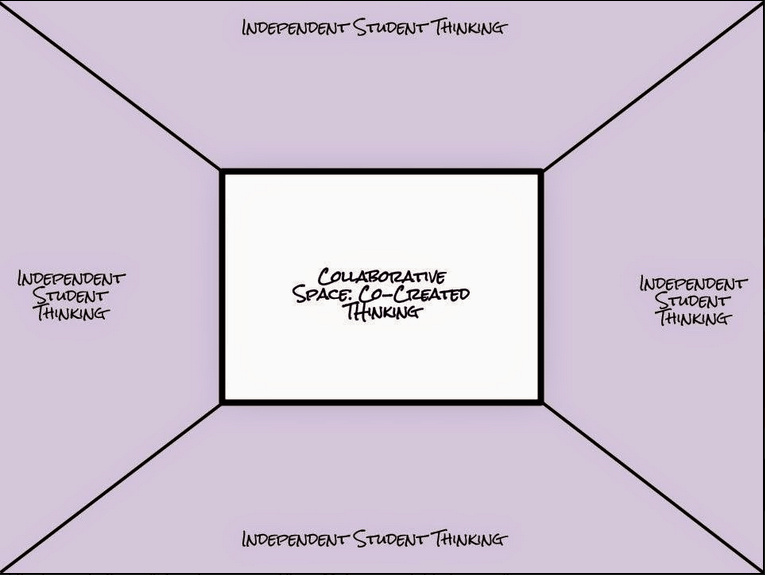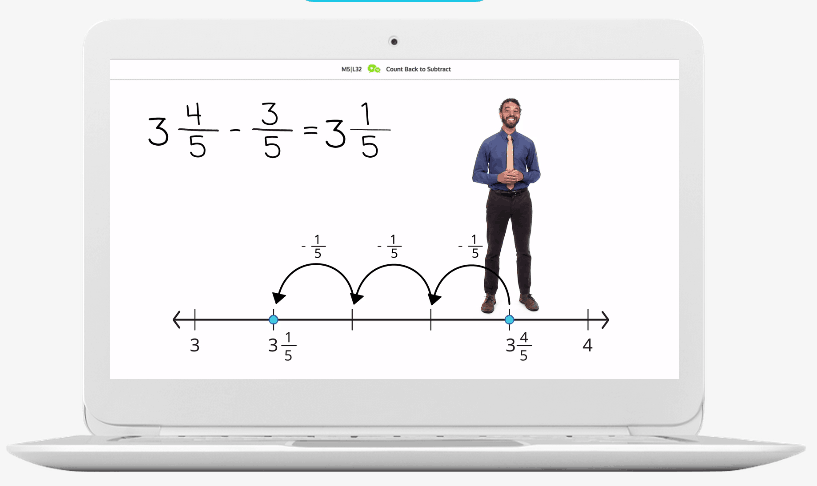While we know that the goal is for all students to be working on grade-level-appropriate content, sometimes students haven’t been positioned to be successful with that complex text or even that rich math problem. In my own experience, there hasn’t been a single class that I have taught where I have had all my students exactly where I want them at the outset, so I have always had to differentiate instruction. The same is true of the teachers I work with on a regular basis as Director of Curriculum and Instruction: no learner is the same, and all require different pathways.
The solution, some will say, is to just give Johnny the fifth grader that first grade text or to have Suzy work on her multiplication facts in a small group while the rest of her class solves a complex problem related to mathematical modeling.
Research study after research study, however, shows us that that strategies like these simply don’t work because students get farther and farther behind (and never get a chance to catch up) because they never have the opportunity to work at their cognitive level. Here’s an example of a mistake I made as an educator that demonstrates this problem: When I taught Spanish One, every ninth grader had to learn the words for different colors. Simple — give them the word, and have them spit it back. From a cognitive standpoint, however, this is b-o-r-i-n-g. It doesn’t emotionally or cognitively engage them (and it isn’t fun for the teacher either!). Here’s a better way: what about having students analyze a painting using the color words that they are acquiring? Now that freshman student is experiencing a challenging cognitive task.
So what can you do to support struggling students so they can participate in grade-appropriate, cognitively demanding work without becoming frustrated or becoming overwhelmed? Let’s start with math first.
Math
Strategy 1: Use a Placemat. This is an easy-to-use strategy where students are divided into small groups, gathered around a piece of paper that has four squares in each corner and a central square in the middle. First, students individually think about a question the teacher has posed and write down their ideas on their own section of the chart paper. Then, students share ideas to discover common elements, which can be written in the center of the chart paper. This allows weaker students to get help from peers with a concept like computation, and still get exposure to the more important conceptual understanding that the problem addresses. An example of a placemat can be found here: http://weinquireandinspire.blogspot.com/2015/03/visible-thinking-digital-place-mats.html
Strategy 2: Create a Math Menu. Start by creating four sections on a piece of paper labeled appetizer, main dish, side dish, and dessert. The appetizers are slightly easier problems that students who are struggling may be asked to complete or items that will help as a means of front loading content. Students who are on grade level might start with the main dish section which is on-grade-level problems; desserts are extension problems for students who need a challenge or who finish early, and side dishes are a mixture of problems so that students can experience some type of choice in the process. Such an approach allows the teacher to integrate remedial practice into the regular assignment and helps provide appropriate scaffolding. The classroom teacher can assign each student a place to start based on pre-assessment or formative data, or students can choose their own location to begin based on their own self-assessment. The key is that all students get an opportunity to work on the main dish: grade-level work! So how do you know what problems students need? Use the Coherence Map and backwards-map a standard to see problem types that may relate to and scaffold current work or forwards-map and explore areas of extension.
 Image adapted from http://www.docsford.com/document/825473
Image adapted from http://www.docsford.com/document/825473
Strategy 3: Personalize Math Content. Zearn has created a free, personalized approach to learning math. Pick a topic in your math curriculum, give students access, and they can get a personalized lesson. The tool is designed with the struggling student in mind and has remediation paths that provide precise feedback and opportunities to try again. Students also learn multiple strategies for each type of problem. Zearn includes content for both independent student learning and daily small-group instruction led by a teacher. From hands-on practice to games to videos that explain concepts, this site truly helps students understand math concepts as connected ideas. Such an approach allows the teacher to integrate those remedial materials into their work while continuing to focus the whole-class lesson on grade-appropriate content.
ELA/Literacy
Now on to language arts. The biggest issue might be that students don’t know the words that they are about to read. This doesn’t mean that they can’t engage in high cognition—it just means that they need more support with components of the reading process and need to be pre-taught those tiered vocabulary words. See this video from Engage New York that shows what a teacher does to help English Language Learners process several complex texts here: https://drive.google.com/file/d/0BwRQdQnS7X3DUGxXTHdFYmdOOTg/view?usp=sharing
Strategy 1: Excerpt Texts. I won’t lie — this one takes time to setup. It truly allows a teacher to provide scaffolding in a regular assignment, however. Take a complex text and excerpt sections of it to give all students access into the ideas of the text; the key is to make sure the excerpt conveys the ideas and claims of the whole text. Students who are struggling can work with shorter excerpts while advanced learners can read longer pieces. Add in additional paired texts that will help students process additional details and claims after students have understood the main idea and supporting details of the primary text.
Strategy 2: Use a Placemat. This strategy is based on the placemat idea I talked about for math, and can help students of all ability levels dig into a complex text. Present students with a controversial statement. (Kids innately love to argue—wait so do adults!—so you have already motivated them to read). Write this statement in the box at the center of the placement. Label each of the remaining boxes with “strongly agree,” “agree,” “disagree,” and “strongly disagree.” Encourage the struggling learners to find at least one reason that the text supports or disproves the controversial statement. Have more advanced students provide an example for each of the categories. By having students use different colored markers, the teacher can tell who is writing what, such that he or she can provide additional supports in future lessons. From this standpoint, all students get to participate and work at a level that allows them to grapple with a complex text.
Strategy 3: Try a Socratic Seminar. The last strategy that I have to share with you is the idea of the traditional Socratic Seminar, upped with paired texts. Give students texts that represent different points of view (note that all texts are on grade level, but some have more features to help support students understand the text). See these three from a recent seminar I gave with a colleague:
https://drive.google.com/open?id=0Bw6TFXXMmtQKTTA3OU5LT2dHS0E
https://drive.google.com/open?id=0Bw6TFXXMmtQKN3Fud2JXTllvVnc
https://drive.google.com/open?id=0Bw6TFXXMmtQKdFMxSDdMWG95Nm8
Have students work in pairs and analyze one of the texts together using a graphic organizer. Ask students to identify key ideas and supporting details. After students have had a chance to read and discuss, have a Socratic Seminar where you facilitate the dialogue by asking probing and clarifying questions based on student responses and the text itself. Each student has the ability to contribute to a complex discussion focused on a complex text. In the examples I linked above, the complex text is about whether or not you should sunbathe. Groupings of students in the Socratic Seminar should be heterogeneous so that students are working with mixed-ability peers, see various viewpoints on the topic, and can have a rich discussion based on their text.
The key, of course, no matter what strategy you choose, is to make sure you are a teacher or administrator who knows your learners. You have to believe that all of your students can be successful with on-grade-level tasks. While I am not an expert on differentiated instruction, I do believe that — if you use some of these strategies and truly give students a chance — you will help students to grapple and succeed with grade-level content and propel them closer to mastery.
This post originally appeared on Achieve the Core, in partnership with Student Achievement Partners.




